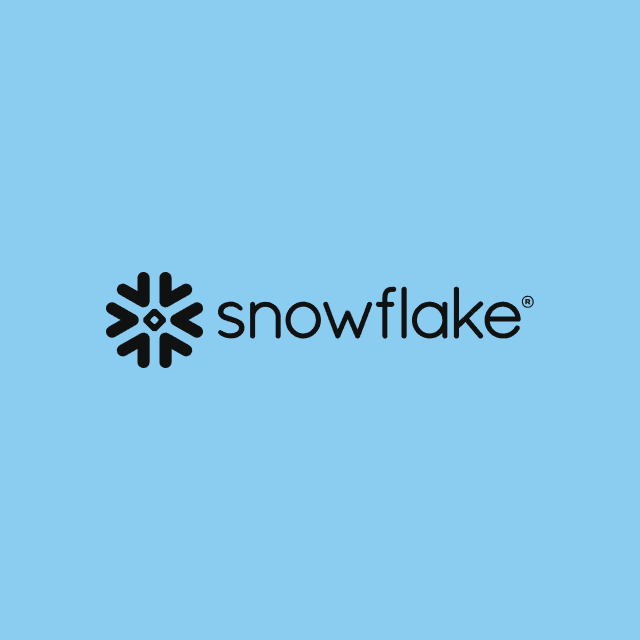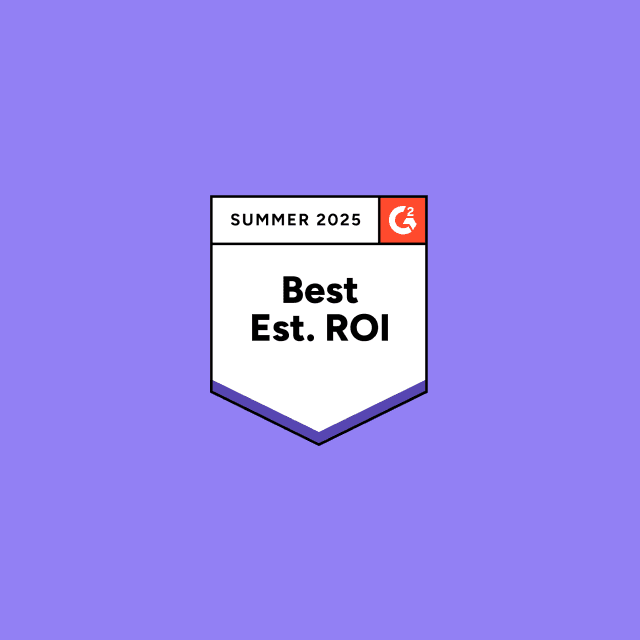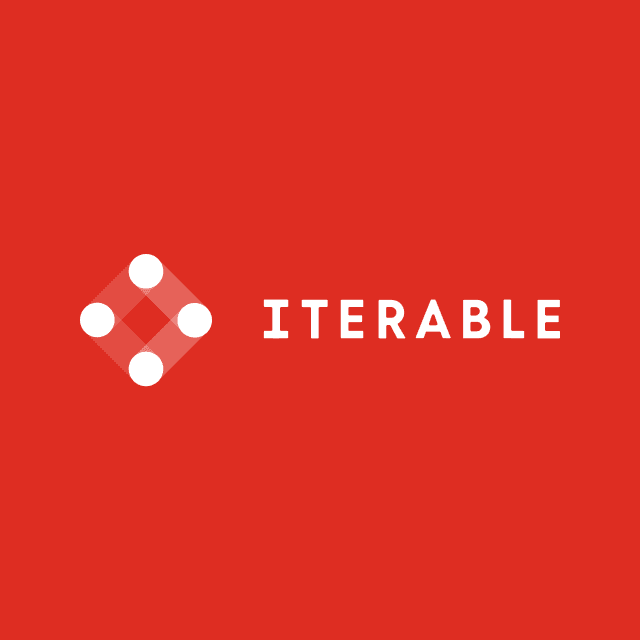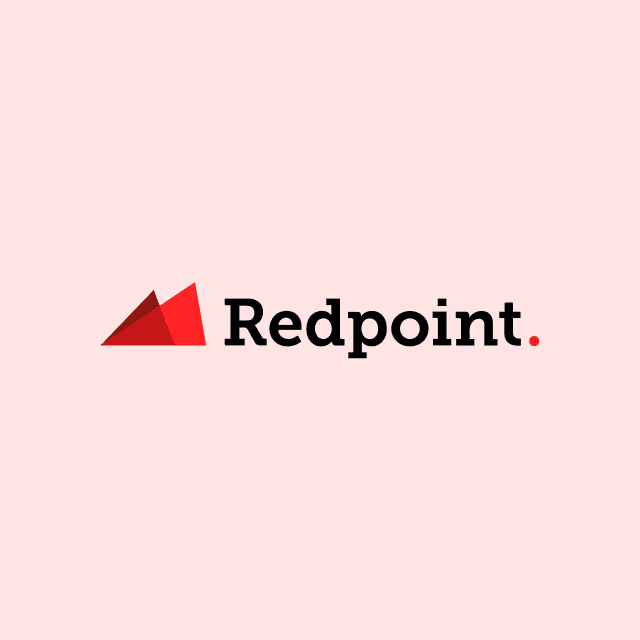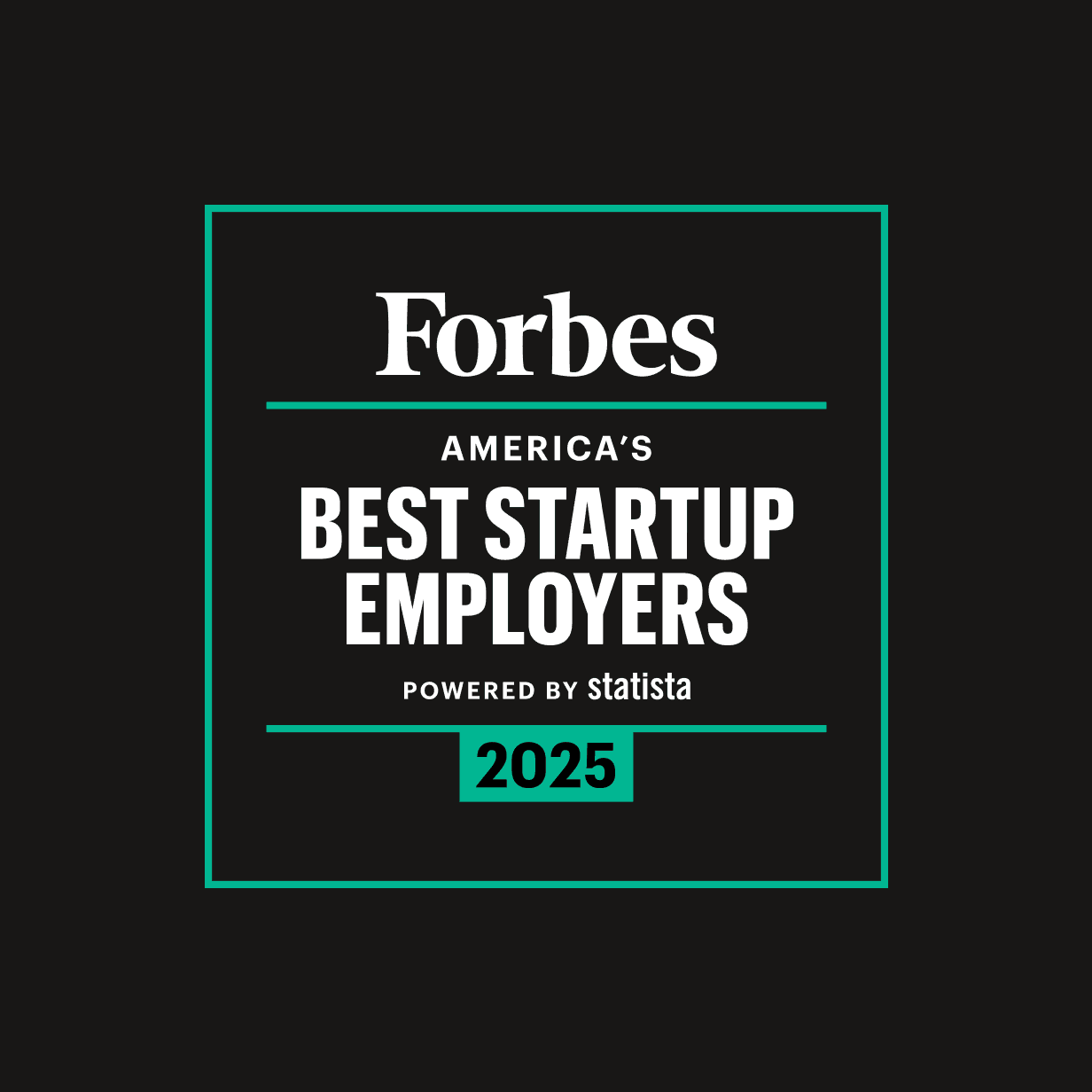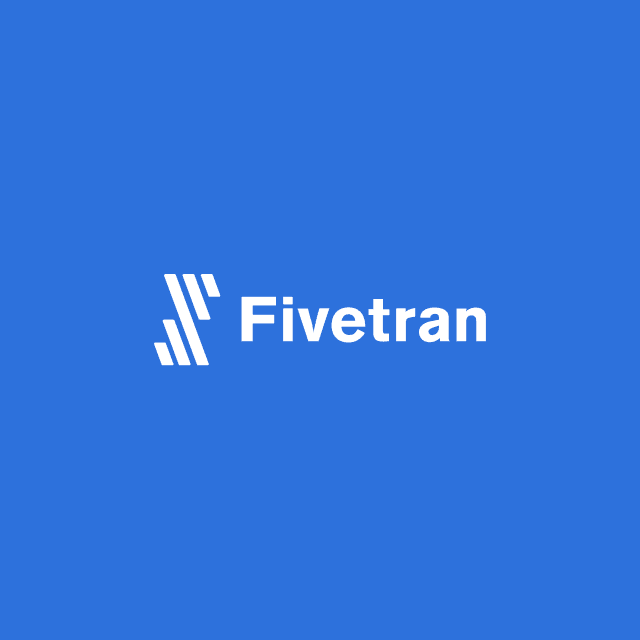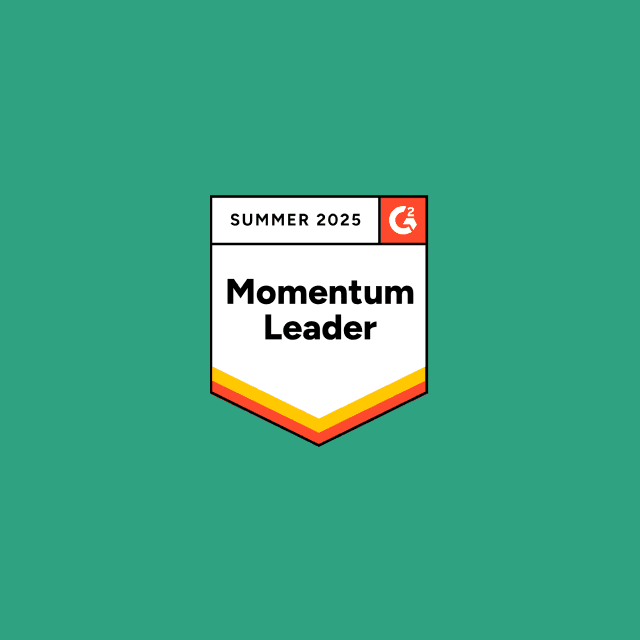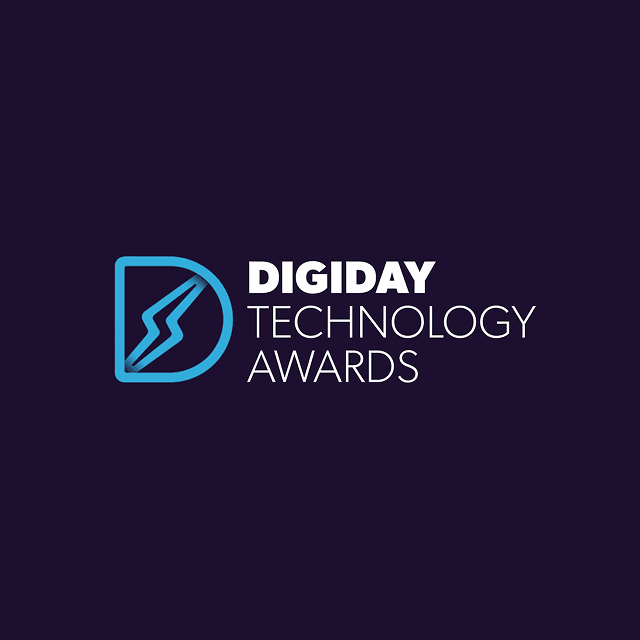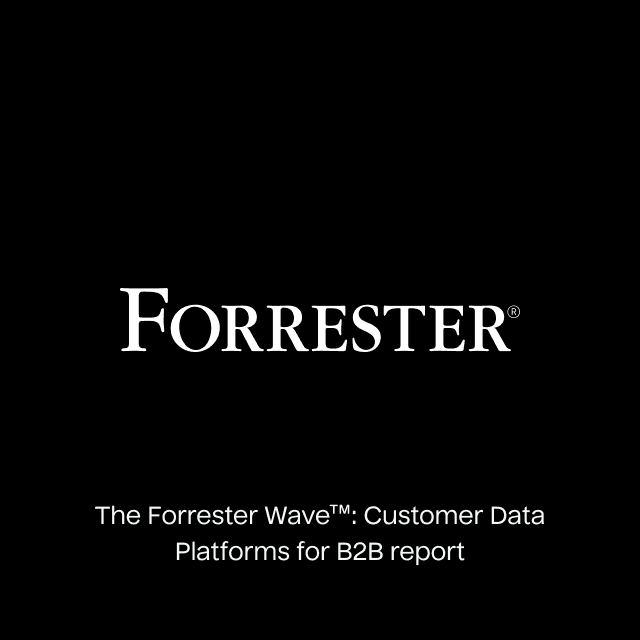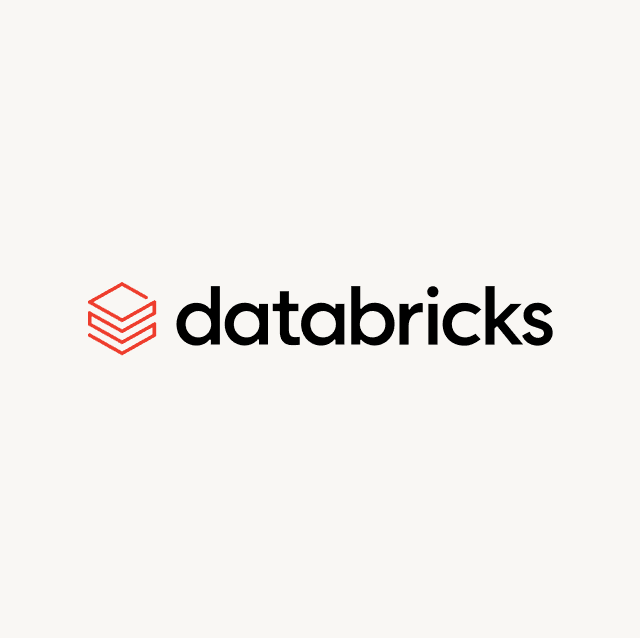There are 237 products on G2 labeled as a customer data platform (CDP). Every vendor has a slightly different definition of a CDP and the jobs it should address. The market is incredibly saturated, which makes finding and evaluating solutions fairly and unbiasedly incredibly difficult.
At Hightouch, our mission is to streamline every aspect of data and marketing operations–including the cumbersome vendor research process. To assist you in navigating this complex decision-making process, we've compiled an exhaustive guide of the most popular CDPs (yes, this includes our competitors). Our goal? To demystify the CDP landscape and make the selection process as straightforward as possible for you.
Here are the five CDP categories we evaluated.
- Traditional CDPs: Packaged platforms that help you collect, store, unify, and activate your data in their managed infrastructure
- Composable CDPs: Modular platforms that collect, unify, and activate data directly from your data warehouse
- Hybrid CDPs: Packaged CDPs that provide some backward compatibility to integrate with your existing data infrastructure.
- Marketing Clouds: Extensive suites offered by large software companies that bundle various marketing and data management products.
- Infrastructure CDPs: Developer-focused platforms that specialize in event tracking and data pipelines
This blog post will tell you everything you need to know about the following solutions: Hightouch, Salesforce CDP, Adobe CDP, mParticle, Segment, Amperity, Treasure Data, ActionIQ, Rudderstack, Simon Data.
2024 CDP Landscape Guide
Don't have time to read, download our 2024 CDP Landscape Guide to learn how the top ten enterprise CDPs compare against each other.


Hightouch
Overview
| Key Information | Products |
|---|---|
| Summary: Hightouch is a Composable CDP solution that provides all of the capabilities of a traditional CDP, but instead of operating as a separate tool, the platform integrates with your existing data infrastructure (e.g., your data warehouse). | Hightouch Events: A library of SDKs that makes it easy to collect & store behavioral data in your data warehouse. |
| Category: Composable CDP | Reverse ETL: A robust Data Activation platform that lets you sync data from your warehouse to downstream marketing & operational tools automatically. |
| Founding Date: 2019 | Customer Studio: A suite of no-code marketing features to build & manage audiences, run experiments, & orchestrate campaigns. |
| End Users: Data teams & marketers | Identity Resolution: A warehouse-native algorithm that unifies profiles in your data infrastructure. |
| HQ: San Francisco, CA | Match Booster: A 3rd-party data onboarding solution that enriches your data “in-flight” to your ad platforms to boost match rates. |
| Notable Customers: Spotify, PetSmart, WeightWatchers, Grammarly, Tripadvisor, Cars.com, Warner Music Group, NBA | Personalization API: A low latency API that powers real-time use cases like on-site personalization, dynamic content, in-app experiences, etc. |
| Key Differentiator: Unbundled architecture that centers around the data warehouse | Campaign Intelligence: A self-serve marketing analytics & AI-copilot to measure & explore campaign performance. |
Company Direction
Hightouch pioneered the Composable CDP by enabling organizations to activate data directly from their cloud data warehouse. Founded by early Segment engineers who saw the potential of the data warehouse and the flexibility it offered, Hightouch quickly established itself as the trusted CDP of choice for organizations that are interested in or already invested in centralizing data within their data warehouse.
The platform has evolved beyond its initial Reverse ETL offering to include warehouse-native capabilities such as event collection, identity resolution, marketing orchestration, and campaign intelligence. Currently, Hightouch is focused on enhancing the platform with AI-driven features aimed at democratizing access to sophisticated decision-making tools across all teams of an organization.
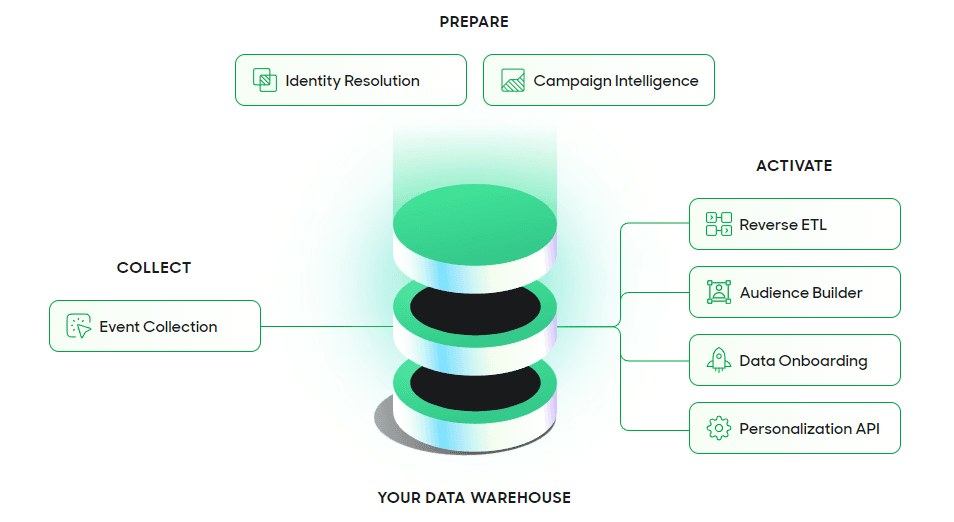
Hightouch CDP Architecture
Core Capabilities
| Category | Platform Information |
|---|---|
| Data Collection | Client-side, server-side, & other 3rd-party sources |
| Data Storage | Your existing data infrastructure (data warehouse, data lake, or database) |
| Data Retention | Unlimited lookback & history |
| Data Schema | Controlled by you (supports any custom entity or object) |
| Audience Management | No-code audience builder (supports any online or offline data stored in your data warehouse) |
| Journey Orchestration | Yes |
| Identity Resolution | No-code tool to define exact or fuzzy-match rules to build owned identity graphs within your data warehouse |
| Identity Graph Compute Location | Lives in your warehouse |
| Reverse ETL | Core sync engine that integrates with existing toolsets & workflows |
| Real-Time Audience Computation | Dependent upon data landing in the warehouse |
| Real-Time Streaming (Event Forwarding) | Yes |
| Low-Latency Profile API | Yes |
| Streaming Reverse ETL | Yes |
| Data Activation Flow | Warehouse to destination (no data is stored in Hightouch) |
| Activation Destinations | 250+ |
| Source of Truth | Single: Your owned data warehouse |
| Security & Compliance | Data lives in your infrastructure (can be configured to be GDPR, CCPA, & HIPAA compliant) |
| Pricing | Unbundled: individually priced features with no MTU billing |
| Proof of Concept (POC) | Less than 1 month |
Pros & Cons
Pros
Most powerful point & click audience builder (supports any offline & online customer data)
Warehouse-native campaign analytics to experiment, measure & analyze audiences
Publicly available customer support metrics (99% CSAT Score)
Cons
Newer vendor in the CDP market
Must have actionable data available in a data platform
Salesforce CDP (Data Cloud for Marketing)
Overview
| Key Information | Products |
|---|---|
| Summary: Salesforce CDP is designed to help you integrate all of your Salesforce data across all of your different Salesforce orgs into unified customer profiles that your marketing team can use across various products within the Salesforce ecosystem. | Data Collection: A data pipelining feature that lets you build & manage data streams to bring in data from other Salesforce products. |
| Category: Marketing Cloud | Identity Resolution: An identity resolution algorithm that helps you merge customer profiles. |
| GA Date: 2021 | Audience Management: A no-code audience builder that lets you create audience cohorts using Salesforce data. |
| HQ: San Francisco, CA | Activation: A sync engine to move data between existing Salesforce products. |
| End Users: Data & marketing teams | |
| Notable Customers: Heathrow Airport, Turtle Bay | |
| Key Differentiator: Integrations with the Salesforce ecosystem |
Company Direction
Salesforce, known for leading sales and marketing-specific products like Sales Cloud and Marketing Cloud, has extended product coverage into the CDP landscape a number of times. The most recent iteration is Salesforce Data Cloud, which is essentially a rebrand of existing Salesforce products and capabilities. The product aims to enable organizations with a data foundation that powers the rest of their Salesforce-specific technologies and use cases. The approach is particularly beneficial for organizations deeply embedded in the Salesforce environment but may present challenges for those needing more open system architecture.
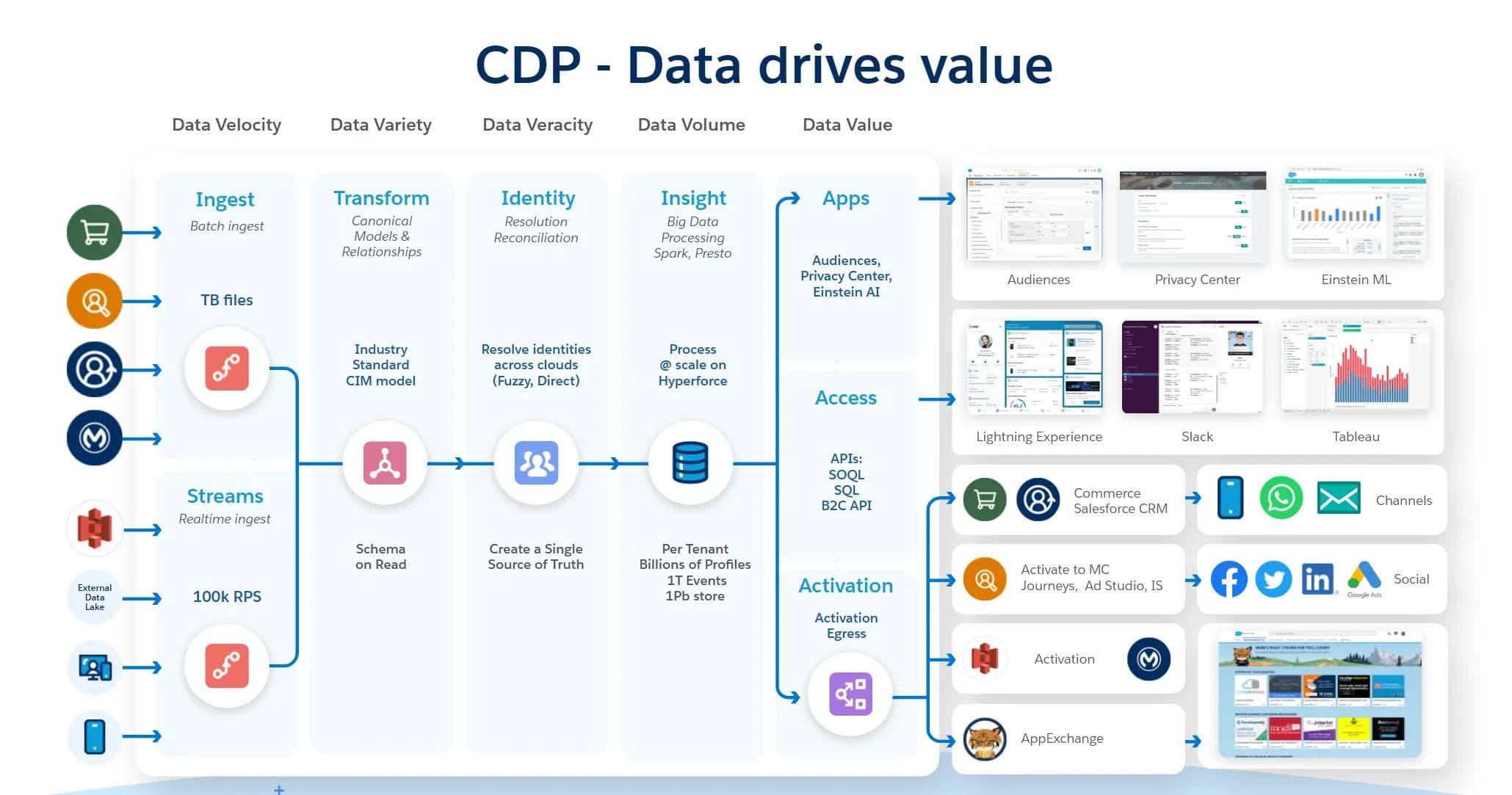
Core Capabilities
| Category | Platform Information |
|---|---|
| Data Collection | Client-side, server-side, & other 3rd-party sources |
| Data Storage | Salesforce's managed infrastructure |
| Data Retention | Variable |
| Data Schema | Controlled by Salesforce (Standard 360 data model for all customers) |
| Audience Management | No-code audience builder (limited to data stored in Salesforce) |
| Journey Orchestration | Yes (add-on product) |
| Identity Resolution | Deterministic IDR managed in Salesforce's infrastructure |
| Identity Graph Compute Location | Owned by Salesforce |
| Reverse ETL | Extremely limited (all data must be replicated to Salesforce first) |
| Real-Time Audience Computation | Not supported (minimum sync cadence is 15 minutes to 1 hour) |
| Real-Time Streaming (Event Forwarding) | Yes |
| Low-Latency Profile API | Yes |
| Streaming Reverse ETL | No |
| Data Activation Flow | Salesforce Data Cloud to destination |
| Activation Destinations | Salesforce ecosystem (limited support for external destinations) |
| Source of Truth | Multiple: Salesforce & your owned data warehouse |
| Security & Compliance | Data lives outside of your cloud infrastructure (can be configured to be GDPR, CCPA, & HIPAA compliant) |
| Pricing | Bundled: variable-based pricing (typically the most expensive CDP option) |
| Proof of Concept (POC) | 4-6+ months |
Pros & Cons
Pros
Strong integrations with the Salesforce ecosystem (Marketing Cloud, Service Cloud, CRM, etc.)
Access to Salesforce partner ecosystem & solutions experts
Ability to negotiate licenses for free products (Slack, Tableau, etc.)
Cons
Very expensive (lots of add-on products required)
Limited integration support for external tools & systems
Inflexible data data model/schema (cannot support custom objects & entities)
Long implementation time & difficult setup process
Data is stored outside of your cloud infrastructure
Adobe CDP
Overview
| Key Information | Products |
|---|---|
| Summary: Adobe CDP is a solution within Adobe Experience Cloud. The platform allows you to create unified customer profiles that you can sync to Adobe-specific marketing tools to power personalization across different marketing channels. | Data Connections: A feature to capture behavioral events & collect data from other Adobe products. |
| Category: Marketing Cloud | Unified Profiles: An identity resolution algorithm to create unified customer profiles. |
| GA Date: 2021 | Data Activation: A no-code audience builder to create audience segments & sync them to Adobe-specific applications. |
| HQ: San Jose, CA | Governance: A framework to manage user access, security, privacy, & regulatory compliance. |
| End Users: Data & marketing teams | |
| Notable Customers: Coca-Cola, Dick’s, Petco, Home Depot | |
| Key Differentiator: Integrations with other Adobe products |
Company Direction
Adobe, one of the largest software companies in the world, came to popularity through the development of publishing and content technology in the 1990s. After a series of successful products focused on digital marketing, Adobe decided to invest further in enterprise customer experience efforts with Adobe Real-Time CDP–now a core piece of the Adobe Experience Cloud.
Designed for data teams in large IT departments, the platform integrates customer data across Adobe's suite, which is ideal for enterprises deeply embedded in the Adobe ecosystem. The goal of the solution is to create a holistic data management platform that consolidates Adobe's existing products into a more cohesive toolset that streamlines customer experience operations for marketers.
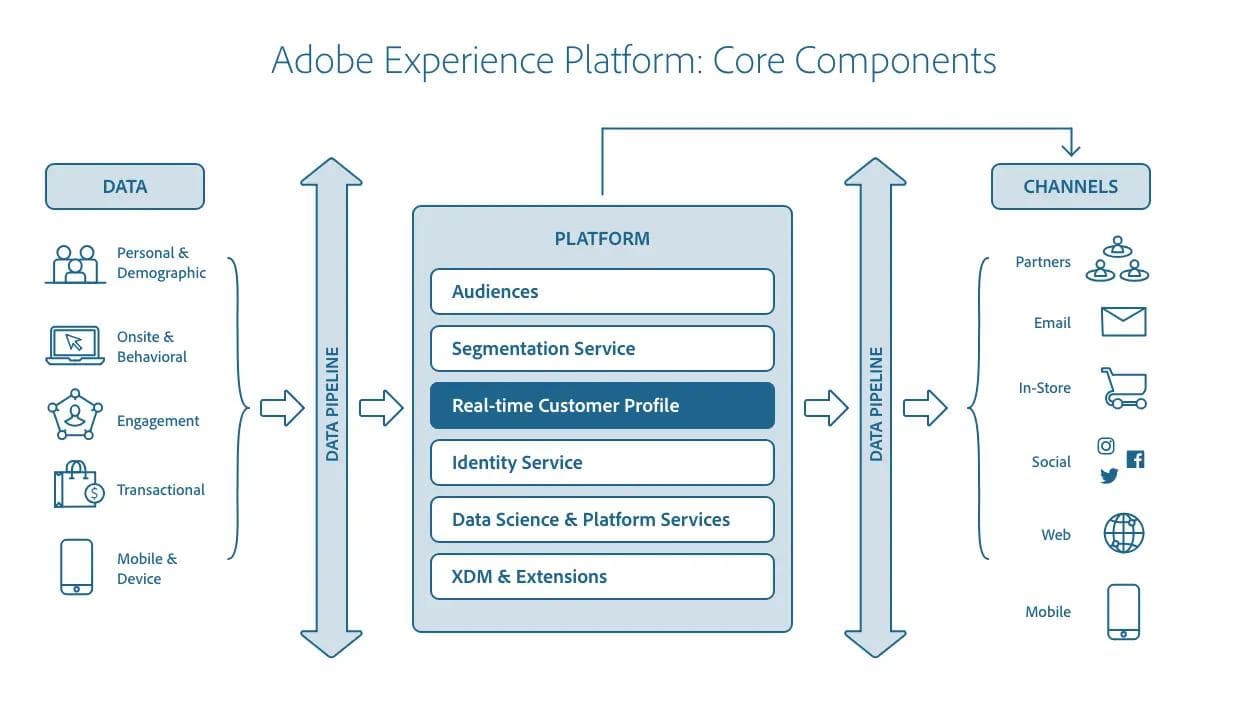
Core Capabilities
| Category | Platform Information |
|---|---|
| Data Collection | Client-side, server-side, & other 3rd-party sources |
| Data Storage | Adobe's managed infrastructure |
| Data Retention | Variable |
| Data Schema | Controlled by Adobe (supports users, accounts, & events) |
| Audience Management | No-code audience builder (integrates with some data warehouses, but limited to 250 syncs per destination) |
| Journey Orchestration | Yes (add-on product) |
| Identity Resolution | Deterministic IDR managed in Adobe's infrastructure |
| Identity Graph Compute Location | Owned by Adobe |
| Reverse ETL | NA |
| Real-Time Audience Computation | Yes (limited to clickstream/behavioral data with no time-based lookbacks) |
| Real-Time Streaming (Event Forwarding) | Yes |
| Low-Latency Profile API | Yes |
| Streaming Reverse ETL | No |
| Data Activation Flow | Adobe CDP to destination |
| Activation Destinations | Adobe ecosystem (limited support for external destinations) |
| Source of Truth | Multiple: Adobe & your owned data warehouse |
| Security & Compliance | Data lives outside of your cloud infrastructure (can be configured to be GDPR, CCPA, & HIPAA compliant) |
| Pricing | Bundled pricing: dependent on monthly tracked users (MTUs) & feature add-ons |
| Proof of Concept (POC) | 4-6+ months |
Pros & Cons
Pros
Strong integrations with the Adobe ecosystem (Adobe Target, Adobe Analytics, Marketo, etc.)
Segmentation builder has some basic AI capabilities
Identity resolution supports clean room use cases through a “Co-op graph” for Adobe CDP customers
Cons
Very expensive (lots of add-on products required)
Limited integration support for external tools & systems
Event collection is only accessible through Adobe's closed-source library
Long implementation time & difficult setup process
Inflexible data data model/schema (cannot support custom objects & entities)
mParticle
Overview
| Key Information | Products |
|---|---|
| Summary: mParticle is a traditional CDP that specializes in mobile event collection, allowing you to easily capture behavioral events & sync that data to hundreds of destinations without having to manage & maintain custom integrations & APIs. | Data Connections: A data collection product that captures behavioral events & forwards them to your marketing destinations. |
| Category: Traditional CDP | Data Quality: A framework & suite of tools designed to help you manage your schema structure. |
| Founding Date: 2012 | Data-Driven Personalization: A no-code audience builder that lets you orchestrate campaigns & journeys across marketing channels. |
| HQ: New York, NY | Indicative: An audience analytics tool that lets you perform cohort analysis & analyze marketing metrics. |
| End Users: Data teams & technical marketers | Cortex: An AI prediction tool that helps you build prediction-based models for your customers. |
| Notable Customers: Burger King, HBO Max, Venmo, JetBlue, Sofi, SeakGeek | |
| Key Differentiator: Mobile SDKs with a focus on supporting enterprise companies |
Company Direction
Founded in 2013 as a direct competitor to marketing clouds and early CDPs, mParticle set out to create a CDP for enterprise brands, particularly those with mobile applications looking to centralize data sources and provide marketing teams with a central store of customer profiles. Coming off acquisitions of analytics provider Indicative and AI startup Vidora, the company is working to implement composable pricing models and warehouse-centric features like Reverse ETL to satisfy the rapid demand for more flexible, warehouse-centric CDP capabilities.
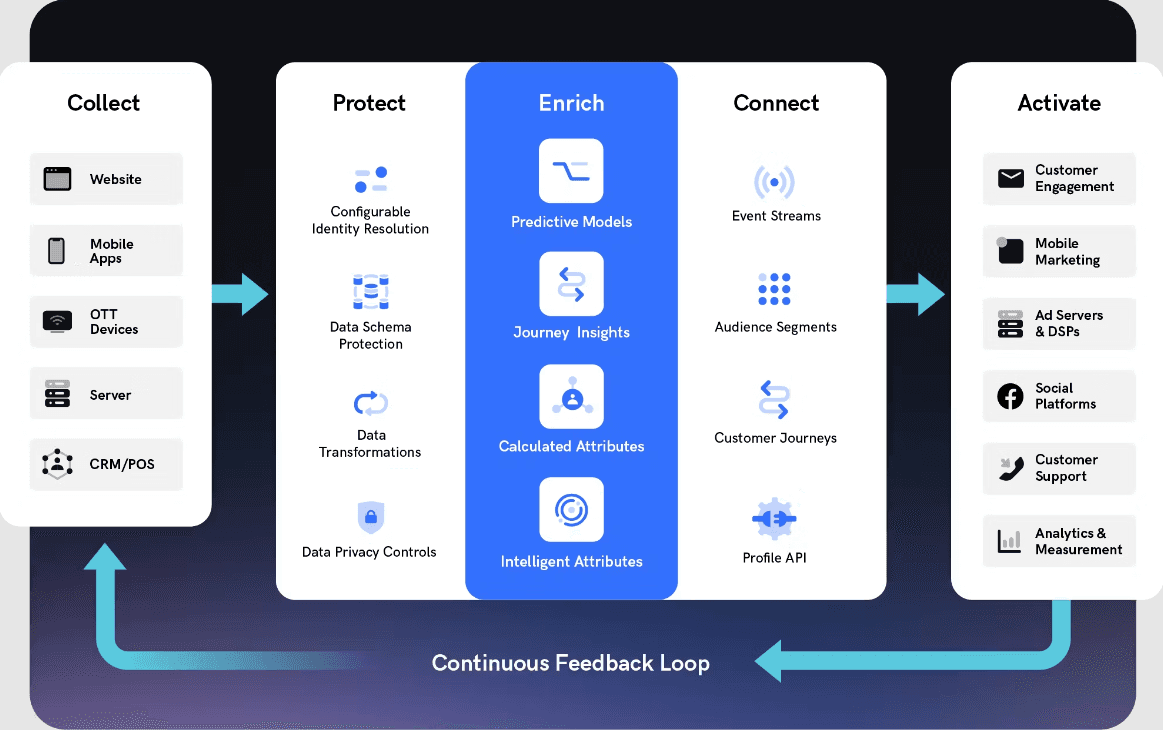
Core Capabilities
| Category | Platform Information |
|---|---|
| Data Collection | Client-side, server-side, & other 3rd-party sources |
| Data Storage | mParticle's managed infrastructure |
| Data Retention | 1-2 years (unlimited lookback can be purchased) |
| Data Schema | Controlled by mParticle (only supports users & events) |
| Audience Management | No-code audience builder (limited to data stored in mParticle) |
| Journey Orchestration | Yes |
| Identity Resolution | Deterministic IDR managed in mParticle's infrastructure |
| Identity Graph Compute Location | Owned by mParticle |
| Reverse ETL | Warehouse data must be ingested into mParticle first |
| Real-Time Audience Computation | Yes (limited to clickstream/behavioral data with no time-based lookbacks) |
| Real-Time Streaming (Event Forwarding) | Yes |
| Low-Latency Profile API | Yes |
| Streaming Reverse ETL | No |
| Data Activation Flow | mParticle to destination |
| Activation Destinations | 200+ |
| Source of Truth | Multiple: mParticle & your owned data warehouse |
| Security & Compliance | Data lives outside of your cloud infrastructure (can be configured to be GDPR, CCPA, & HIPAA compliant) |
| Pricing | Bundled (variable-based pricing) |
| Proof of Concept (POC) | 1-3 months |
Pros & Cons
Pros
Good with mobile apps
Marketer friendly UI
Acquisitions & new product offerings (Vidora for AI modeling & Indicative for audience analytics)
Cons
Inflexible data data model/schema (cannot support custom objects & entities)
Identity graph is owned by mParticle
Long implementation & difficult setup process
Data is stored outside of your cloud infrastructure
Segment
Overview
| Key Information | Products |
|---|---|
| Summary: Segment is a traditional CDP that specializes in event collection & Data Activation. The platform collects data from websites, mobile apps, servers, & cloud applications & pushes that data to downstream destinations. | Connections: A framework for collecting data from mobile apps, websites, servers, & SaaS applications. |
| Category: Traditional CDP | Protocols: A governance feature for how your data is stored & collected. |
| Founding Date: 2012 | Unify: An identity resolution product to help you link known & anonymous users to a single profile. |
| HQ: San Francisco, CA | Twilio Engage: A suite of no-code marketing features to help you build audiences & orchestrate campaigns/journeys across channels. |
| End Users: Data teams & technical marketers | |
| Notable Customers: Fox, CrossFit, Sanofi, The Motley Fool, Trust Pilot, CraftJack, Crypto.com, TravelPerk | |
| Key Differentiator: Event collection |
Company Direction
Segment emerged as an early innovator in the CDP space by focusing on data collection, governance, and event routing. These core capabilities quickly made it a favorite among data teams. Over time, new features like identity resolution and audience management were added to appeal to marketing teams as well. The acquisition by Twilio in 2020 kicked off a new focus on adding journey orchestration and enhanced communication capabilities.
In recent years, Segment has faced challenges in maintaining its performance standards, prompting discussions about a potential divesture from Twilio. In response to emerging demands for more adaptable data architectures, Segment is actively developing MVP warehouse-connectivity features. This effort is part of a strategic pivot intended to modernize product offerings, combat composable alternatives, and refine the company’s overall market approach amidst evolving industry expectations.
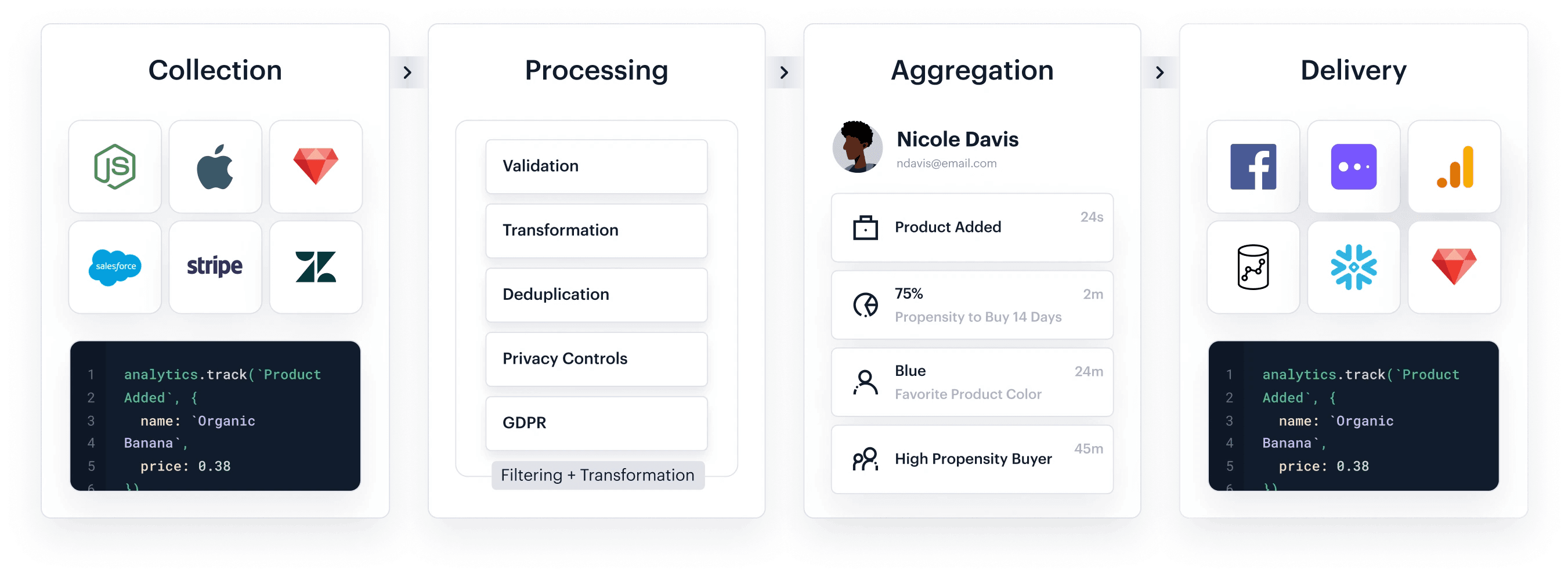
Core Capabilities
| Category | Platform Information |
|---|---|
| Data Collection | Client-side, server-side, & other 3rd-party sources |
| Data Storage | Segment's managed infrastructure (less mature data warehouse option available) |
| Data Retention | 1-3 years |
| Data Schema | Controlled by Segment (supports users, events & limited support of linked entities) |
| Audience Management | No-code audience builder (supports some backward compatibility with data warehouses) |
| Journey Orchestration | Yes |
| Identity Resolution | Deterministic IDR managed in Segment's infrastructure |
| Identity Graph Compute Location | Owned by Segment |
| Reverse ETL | Basic add-on feature, with limited features & destinations (not a core sync engine) |
| Real-Time Audience Computation | Yes (limited to clickstream/behavioral data with no time-based lookbacks) |
| Real-Time Streaming (Event Forwarding) | Yes |
| Low-Latency Profile API | Yes |
| Streaming Reverse ETL | No |
| Data Activation Flow | Segment to destination |
| Activation Destinations | 400+ |
| Source of Truth | Multiple: Segment & your owned data warehouse |
| Security & Compliance | Data lives outside of your cloud infrastructure (can be configured to be GDPR, CCPA, & HIPAA compliant) |
| Pricing | Bundled pricing: dependent on monthly tracked users (MTUs) & feature add-ons |
| Proof of Concept (POC) | 1-3 months |
Pros & Cons
Pros
Mature event collection infrastructure
Strong product documentation
Easy to scale & add additional event streaming destinations
Cons
Inflexible data data model/schema (cannot support custom objects & entities)
Identity graph is owned by Segment
Long implementation & difficult setup process
Data is stored outside of your cloud infrastructure
Amperity
Overview
| Key Information | Products |
|---|---|
| Summary: Amperity is a traditional CDP that specializes in identity resolution for B2C retailers. The platform helps you merge & deduplicate known & anonymous user profiles using patented technology so you can better understand your customers & create unified customer profiles for your marketing use cases. | AmpID: A number of proprietary identity resolution algorithms to stitch user events into a comprehensive identity graph. |
| Category: Traditional CDP | Amp360: A customer 360 framework to help you model & transform your data. |
| Founding Date: 2016 | AmpIQ: An activation feature that lets you sync audiences to your operational tools. |
| End Users: Data teams | DataGrid: The underlying infrastructure that powers data collection, processing, storage, & activation in the platform. |
| Key Differentiator: Identity resolution | |
| HQ: Seattle, WA | |
| Notable Customers: Wyndham, Brooks, Alaska Airlines, Stanley, Servco |
Company Direction
Amperity has gained traction in the CDP space as one of the most advanced identity resolution providers on the market today. The company has amassed a number of patents on various identity resolution algorithms.
Historically, Amperity has always operated as a platform designed for data teams due to limited activation capabilities. However, Amperity is now beginning to build out more holistic marketing features for non-technical users to help marketers power personalization use cases across channels.
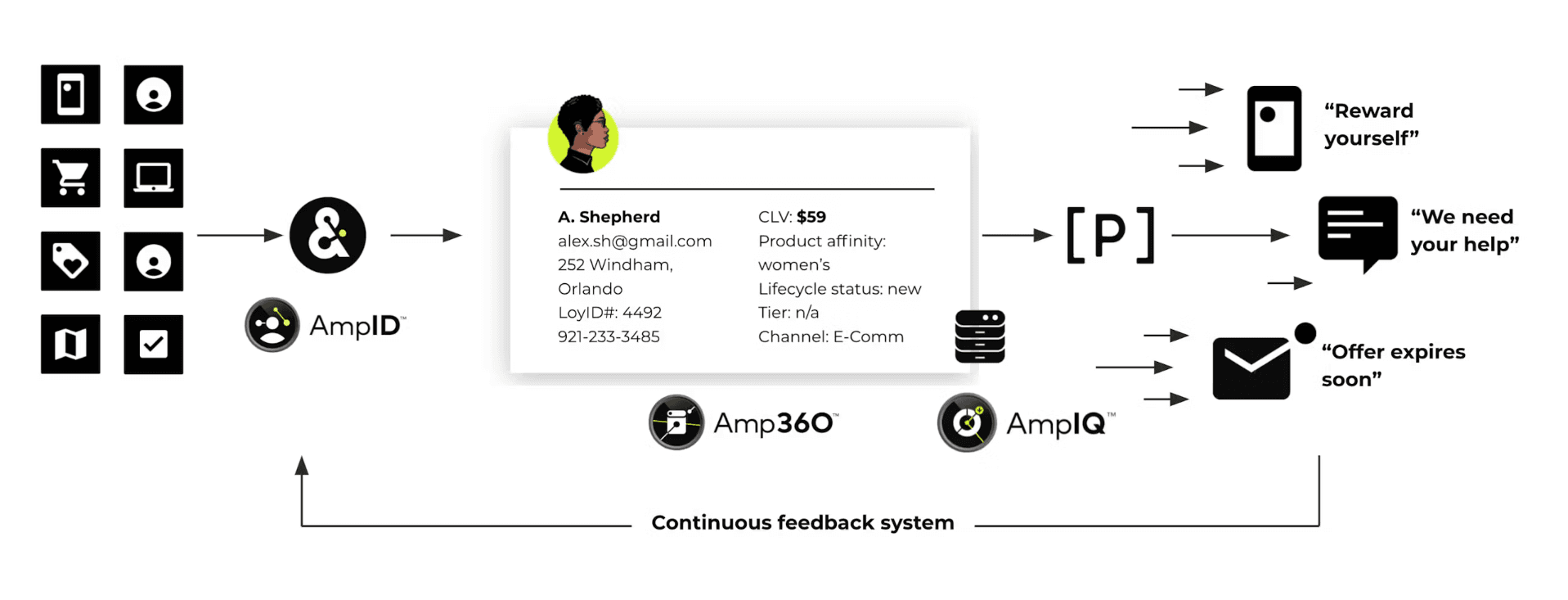
Core Capabilities
| Category | Platform Information |
|---|---|
| Data Collection | Client-side, server-side, & other 3rd-party sources |
| Data Storage | Amperity's managed infrastructure |
| Data Retention | Variable |
| Data Schema | Controlled by Amperity (opinionated data models centered around user profiles) |
| Audience Management | No-code audience builder (limited to data stored in Amperity) |
| Journey Orchestration | Yes |
| Identity Resolution | Supports both probabilistic & ML algorithms in Amperity's managed infrastructure |
| Identity Graph Compute Location | Owned by Amperity |
| Reverse ETL | NA |
| Real-Time Audience Computation | Yes (limited to clickstream/behavioral data with no time-based lookbacks) |
| Real-Time Streaming (Event Forwarding) | Yes |
| Low-Latency Profile API | Yes |
| Streaming Reverse ETL | No |
| Data Activation Flow | Amperity to destination |
| Activation Destinations | 70+ |
| Source of Truth | Multiple: Amperity & your owned data warehouse |
| Security & Compliance | Data lives outside of your cloud infrastructure (can be configured to be GDPR, CCPA, & HIPAA compliant) |
| Pricing | Bundled pricing: dependent on monthly tracked users (MTUs) & feature add-ons |
| Proof of Concept (POC) | 4-6+ months |
Pros & Cons
Pros
Strong identity resolution offerings
Non-supported cloud sources can be ingested into Amperity via Fivetran ETL pipelines
Implementation support via solution architects
Cons
Not marketer-friendly
Long implementation time & difficult setup process
Pricing is based on MTUs
Limited number of activation destinations
Treasure Data
Overview
| Key Information | Products |
|---|---|
| Summary: Treasure Data is a traditional CDP built for data teams & enterprise companies that helps you collect & transform your data so you can build custom audience segments to power personalization. | Data Collection: A suite of pre-built connectors & integrations to collect both traditional data & behavioral data. |
| Category: Traditional CDP | Profile Unification: A set of transformation capabilities you can use to perform identity resolution & merge profiles together. |
| Founding Date: 2011 | Audience Segmentation: A no-code audience builder to create cohorts of users using the data available in the platform. |
| HQ: Mountain View, CA | Experimentation & Analytics: An analytics portal that displays metrics about your segments so you can measure performance across campaigns. |
| End Users: Data teams | Activation: A data syncing engine that lets you push audience cohorts to other operational systems. |
| Notable Customers: Subaru, Lion Corp., Credit Saison, Shiseido | |
| Key Differentiator: Can operate as a data warehouse or a CDP |
Company Direction
Treasure Data didn’t actually start out as a CDP; it was originally created as a big data platform for enterprise companies. The company pivoted into the CDP space after realizing that most of the use cases the platform was powering were actually marketing-related. Since then, the company has been focused on building out marketing features to create a complete CDP offering for marketers.
While the platform's architecture was initially developed to meet the complex needs of data teams, it has been adapted to support marketing functions. However, this adaptation means that the interface and user experience may not be as intuitive for non-technical users, a factor the company continues to address as it evolves.
Core Capabilities
| Category | Platform Information |
|---|---|
| Data Collection | Client-side, server-side, & other 3rd-party sources |
| Data Storage | Treasure Data's managed infrastructure |
| Data Retention | Variable |
| Data Schema | More flexible than most traditional CDPs, more difficult to set up than Composable CDPs |
| Audience Management | Limited audience-building capabilities for non-technical users |
| Journey Orchestration | Yes |
| Identity Resolution | Deterministic IDR managed in Treasure Data's infrastructure |
| Identity Graph Compute Location | Owned by Treasure Data |
| Reverse ETL | NA |
| Real-Time Audience Computation | Yes (limited to clickstream/behavioral data with no time-based lookbacks) |
| Real-Time Streaming (Event Forwarding) | Yes |
| Low-Latency Profile API | Yes |
| Streaming Reverse ETL | No |
| Data Activation Flow | Treasure Data to destination |
| Activation Destinations | 170+ |
| Source of Truth | Multiple: Treasure Data & your owned data warehouse |
| Security & Compliance | Data lives outside of your cloud infrastructure (can be configured to be GDPR, CCPA, & HIPAA compliant) |
| Pricing | Bundled pricing: dependent on monthly tracked users (MTUs) & feature add-ons |
| Proof of Concept (POC) | 4-6+ months |
Pros & Cons
Pros
Strong support for Japanese-specific brands/companies
Data engineering & analytics functionality
AI/ML capabilities
Cons
Not marketer-friendly (built for data teams)
Architecture is built on legacy technology (Presto & Hive)
Requires substantial data engineering resources to implement & maintain
Identity graph is owned by Treasure Data
ActionIQ
Overview
| Key Information | Products |
|---|---|
| Summary: ActionIQ is a hybrid CDP that aims to help you unify & manage your customer data in one central platform & then activate it across your various marketing channels. The platform offers a number of features, including data collection, audience segmentation, identity resolution, & even some real-time capabilities. | Customer Data Platform: A centralized platform where you can collect & store behavioral data. |
| Category: Hybrid CDP | Identity: An identity resolution service to resolve customer profiles. |
| Founding Date: 2014 | Audience Center: A no-code audience builder to segment customers using attributes & user events. |
| HQ: New York, NY | Journey Management: An orchestration tool to coordinate multi-step touchpoints with your customers. |
| End Users: Data teams & technical marketers | Real-Time CX: A suite of real-time capabilities to help you coordinate triggers & pull data using a low-latency API. |
| Notable Customers: Albertsons, Autodesk, Pandora, Washington Post | |
| Key Differentiator: Supports managed-deployment or warehouse-native deployment |
Company Direction
ActionIQ started out as a traditional CDP offering, similar to Segment and mParticle. However, due to the customer demand for more “warehouse-native” and “composable” solutions, ActionIQ has been trying to re-architect the platform to better integrate with data warehouses. Currently, the company positions itself as offering a hybrid model, enabling clients to store data either within ActionIQ-managed infrastructure or in their own data warehouses.
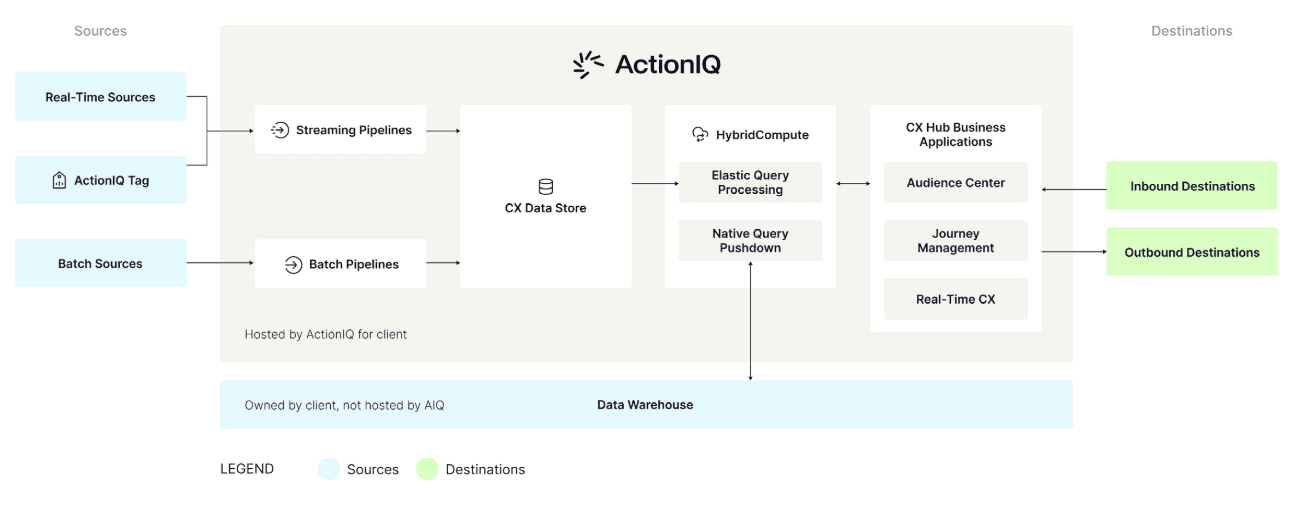
Core Capabilities
| Category | Platform Information |
|---|---|
| Data Collection | Client-side, server-side, & other 3rd-party sources |
| Data Storage | ActionIQ's managed infrastructure (less mature data warehouse option available) |
| Data Retention | Variable |
| Data Schema | Flexible but must involve an ActionIQ engineer to edit a schema |
| Audience Management | No-code audience builder (offers some functionality to leverage data in your data warehouse) |
| Journey Orchestration | Yes |
| Identity Resolution | Deterministic IDR managed in ActionIQ's infrastructure |
| Identity Graph Compute Location | Owned by ActionIQ |
| Reverse ETL | Basic features supported - limited functionality for data teams (not a core sync engine) |
| Real-Time Audience Computation | Yes (limited to clickstream/behavioral data with no time-based lookbacks) |
| Real-Time Streaming (Event Forwarding) | Yes |
| Low-Latency Profile API | Yes |
| Streaming Reverse ETL | No |
| Data Activation Flow | ActionIQ to destination or data warehouse to destination |
| Activation Destinations | 200+ |
| Source of Truth | Multiple: ActionIQ & your owned data warehouse |
| Security & Compliance | Data can live in your infrastructure or ActionIQ managed infrastructure (can be configured to be GDPR, CCPA, & HIPAA compliant) |
| Pricing | Bundled (variable-based pricing) |
| Proof of Concept (POC) | 4-6+ months |
Pros & Cons
Pros
Integrates with some data warehouses
Audience builder is easy & intuitive to use
More flexible than traditional CDPs
Cons
Setting up new integrations requires you to submit support tickets
Migrating to hybrid or warehouse-only architectures requires significant engineering effort
Identity graph is owned by ActionIQ
Documentation is only available to paying customers
RudderStack
Overview
| Key Information | Products |
|---|---|
| Summary: RudderStack is a customer data infrastructure solution designed to help your data teams collect events, manage ETL pipelines, & build audience cohorts. The platform acts as a customer data pipelining tool to help you move data between systems. | Event Stream: An open-source event tracking solution that lets you capture behavioral events & route them to your downstream tools. |
| Category: Infrastructure CDP | Cloud Extract (ETL): A data integration tool that helps you move data from your SaaS applications to your warehouse. |
| Founding Date: 2019 | Identity Stitching: An identity resolution feature that enables you to merge & combine identifiers across digital touchpoints to deduplicate profiles. |
| HQ: San Francisco, CA | Reverse ETL: A sync engine to help you move data out of your warehouse to your operational tools. |
| End Users: Data teams | Audiences: A no-code audience builder to create segments from your warehouse. |
| Notable Customers: Manscaped, StatPearls, Wyze, Joybyrd, InfluxData, Grafana | |
| Key Differentiator: Open-source event collection |
Company Direction
RudderStack was originally founded as an open-source alternative to Segment that data teams could easily implement to capture behavioral data. The company is focused on helping data teams build and maintain customer data infrastructure (CDI) rather than supporting the marketer-friendly features that one would typically expect within a CDP.
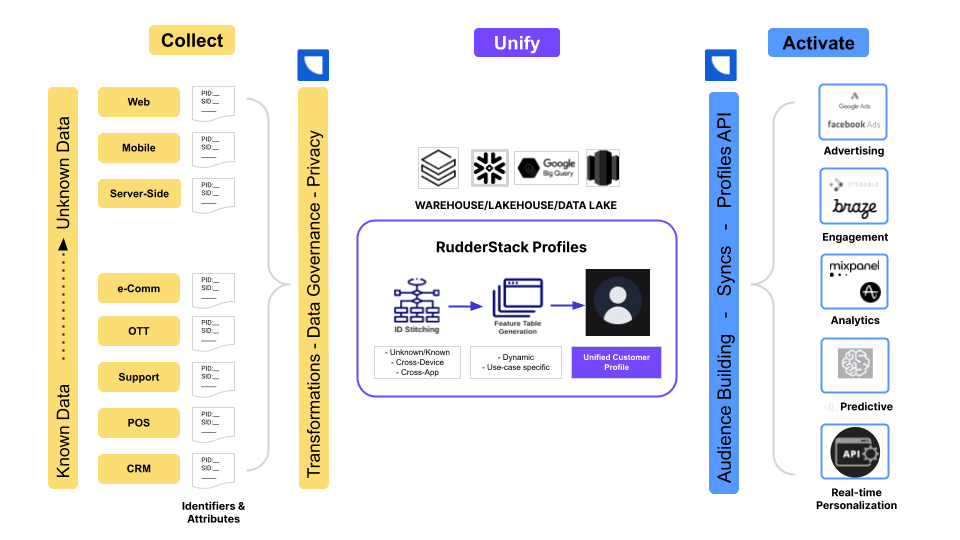
Core Capabilities
| Category | Platform Information |
|---|---|
| Data Collection | Client-side, server-side, & other 3rd-party sources |
| Data Storage | Your existing data infrastructure (data warehouse, data lake, or database) |
| Data Retention | Unlimited lookback & history |
| Data Schema | Controlled by you (supports any custom entity or object) |
| Audience Management | Limited audience-building capabilities for non-technical users |
| Journey Orchestration | Yes |
| Identity Resolution | Warehouse-native, code-based, deterministic IDR |
| Identity Graph Compute Location | Lives in your warehouse |
| Reverse ETL | Available with limited capabilities (visual mapping is not available for all destinations) |
| Real-Time Audience Computation | Dependent upon data landing in the warehouse |
| Real-Time Streaming (Event Forwarding) | Yes |
| Low-Latency Profile API | Yes |
| Streaming Reverse ETL | |
| Data Activation Flow | Data warehouse to destination |
| Activation Destinations | 200+ |
| Source of Truth | Single: Your owned data warehouse |
| Security & Compliance | Can be configured to be GDPR, CCPA, & HIPAA compliant |
| Pricing | Dependent on event volume & add-on features |
| Proof of Concept (POC) | Variable |
Pros & Cons
Pros
Open-source SDKs
Can leverage your existing data platform for underlying storage
Supports ETL pipelines to ingest data in addition to event collection
Cons
Not marketer-friendly (built for data teams)
Audience builder is difficult to use
Identity resolution mapping/merging logic is inflexible & purely deterministic
Reverse ETL is limited & underdeveloped
Simon Data
Overview
| Key Information | Products |
|---|---|
| Summary: Simon Data is a fully managed CDP solution that runs on top of Snowflake. The platform provides all of the typical capabilities of a CDP & focuses on helping marketers build audiences, orchestrate campaigns, & sync data directly to downstream operational tools. | Simon Signal: An event tracking framework that helps you collect, process, & ingest events into the Simon Data. |
| Category: Composable CDP | Identity: An identity resolution algorithm that helps you resolve customer identities. |
| Founding Date: 2014 | Segments: A no-code audience builder to create segments using attributes or user-completed events. |
| HQ: New York, NY | Flows: An activation engine that lets you sync audiences to destinations or send messages to specific audiences. |
| End Users: Data teams & technical marketers | Simon Mail: An email service platform (ESP). |
| Notable Customers: RCI, Vimeo, Catch Co., The Farmer’s Dog, ASOS | Journeys: An orchestration tool to manage flows & coordinate cross-channel engagement. |
| Key Differentiator: Integrates with Snowflake |
Company Direction
Founded in 2013, Simon Data initially emerged as a messaging platform aimed at enhancing data accessibility for marketing teams. Over the years, the company has transitioned into positioning itself as a CDP while maintaining a strong emphasis on messaging and engagement capabilities. Recently embracing Snowflake for both positioning and architecture, Simon Data has committed to leveraging the Data Cloud to facilitate better access and use of data across organizations.
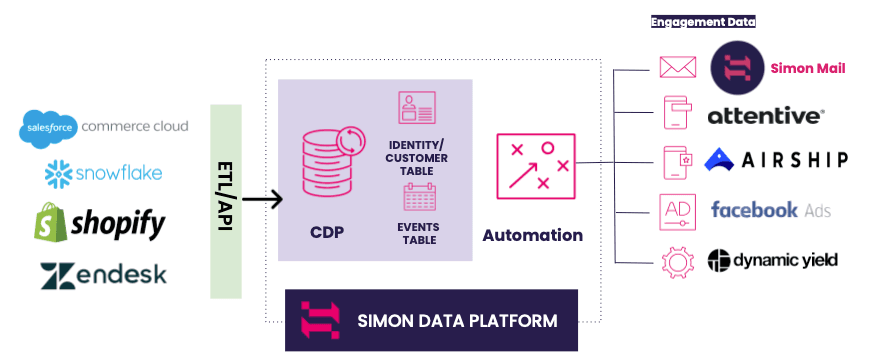
Core Capabilities
| Category | Platform Information |
|---|---|
| Data Collection | Client-side, server-side, & other 3rd-party sources |
| Data Storage | Simon Data's managed Snowflake instance or your existing owned Snowflake instance |
| Data Retention | 2 years for Simon's managed Snowflake Instance (unlimited lookback & history available when using your existing Snowflake instance) |
| Data Schema | Supports custom objects, but you must rebuild your data warehouse models to fit in Simon Data |
| Audience Management | No-code audience builder (can reference data from Snowflake) |
| Journey Orchestration | Yes |
| Identity Resolution | Deterministic IDR managed in Simon Data's infrastructure |
| Identity Graph Compute Location | Owned by Simon Data |
| Reverse ETL | Limited to Snowflake as a source |
| Real-Time Audience Computation | Yes (limited to clickstream/behavioral data with no time-based lookbacks) |
| Real-Time Streaming (Event Forwarding) | Yes |
| Low-Latency Profile API | Yes |
| Streaming Reverse ETL | No |
| Data Activation Flow | Snowflake to destination |
| Activation Destinations | 45+ |
| Source of Truth | Snowflake Data Cloud |
| Security & Compliance | Data lives in your Snowflake instance or a Snowflake instance managed by Simon Data (can be configured to be GDPR, CCPA, & HIPAA compliant) |
| Pricing | Bundled (variable-based pricing) |
| Proof of Concept (POC) | 4-6 months |
Pros & Cons
Pros
Non-supported cloud sources can be ingested into Simon Data via Stitch ETL pipelines
Built-in email service provider (ESP) via Simon Mail
Some AI capabilities to build predictive data science models
Cons
Only integrates with Snowflake
Limited number of activation destinations
Some aspects of IDR are outsourced via FullContact
2024 CDP Landscape Guide
Evaluating CDPs? Download our 2024 CDP Landscape Guide to learn how the top ten enterprise CDPs compare across the following:
- Products & Features
- Core Capabilities
- CDP Type
- Key Differentiator
- Company Direction


Platform Comparison Matrix
| Platform | Pros | Cons |
|---|---|---|
| Hightouch |
|
|
| Salesforce CDP |
|
|
| Adobe CDP |
|
|
| mParticle |
|
|
| Segment |
|
|
| Amperity |
|
|
| Treasure Data |
|
|
| ActionIQ |
|
|
| RudderStack |
|
|
| Simon Data |
|
|
Closing Thoughts
Your decsion to purchase a CDP should never come down to a single vendor's analysis, but hopefully this guide serves as a practicle starting point wich can enable you to choose a CDP that best meets the unique needs of your business. You can also created use our CDP RFP template to evalaute which CDP is the right fit for you.
At Hightouch, our team is comprised of former CDP users and buyers, so we have firsthand experience dealing with the complexities of researching and purchasing CDPs. If you're evaluating CDPs book a demo with one of our solution engineers to learn how you can use Hightouch to leverage data faster, drive personalization, and unlock performance across your marketing channels.




